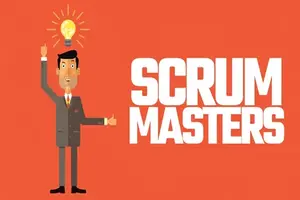Scrum Master
A Scrum Master is a pivotal role within the Agile framework, responsible for facilitating and championing the principles of Scrum to ensure successful project delivery. More than just a project manager, the Scrum Master acts as a servant-leader, supporting the Scrum Team and the broader organization in adopting Agile practices. They help remove impediments, facilitate communication, and foster a collaborative environment where teams can self-organize and continually improve their work processes.
With a keen focus on transparency, inspection, and adaptation, the Scrum Master plays a critical role in guiding teams through the Scrum ceremonies, coaching them in Agile principles, and promoting a culture of continuous learning and excellence. In essence, the Scrum Master serves as the guardian of Scrum values, working tirelessly to enable teams to deliver valuable, high-quality products efficiently and adapt to changing circumstances with agility.
A Scrum Master course typically covers various aspects of Scrum, an agile framework used for managing complex projects. Below is a sample course outline for a Scrum Master training program. Keep in mind that the specific content and duration of the course may vary depending on the training provider.
Course Outline
- Understanding Agile principles and values
- Evolution of Agile methodologies
- Scrum as an Agile framework
- Scrum roles, artifacts, and ceremonies
- Scrum Master responsibilities and duties
- Product Owner role and responsibilities
- Development Team role and responsibilities
- Interaction and collaboration among roles
- Product Backlog: What it is and how it’s managed
- Sprint Backlog: Creating and maintaining it
- Increment: Definition of Done (DoD)
- The importance of transparency in artifacts
- Sprint Planning: Purpose, process, and attendees
- Daily Scrum (Stand-up): Structure and benefits
- Sprint Review: Demonstrating the product increment
- Sprint Retrospective: Reflecting on the sprint
- How Scrum works in real-world projects
- Scrum in different industries and domains
- Scaling Scrum for large organizations (e.g., Scrum of Scrums)
- User Stories and their importance
- Agile estimation techniques (e.g., Planning Poker)
- Sprint Planning Meeting and capacity planning
- Scrum Master as a servant-leader
- Facilitating Scrum events effectively
- Coaching the Scrum Team and stakeholders
- Identifying and addressing impediments
- Conflict resolution within the Scrum Team
- Dealing with organizational impediments
- Key agile metrics and their significance
- Burndown charts, velocity, and other tracking tools
- Using metrics for continuous improvement
- Analyzing real-world Scrum implementations
- Learning from successes and failures
- Best practices and lessons learned
- Overview of Scrum Master certification options (e.g., Scrum.org, Scrum Alliance)
- Preparing for the Scrum Master certification exam
- Mock exams and practice questions
- Implementing Scrum in your organization
- Ongoing learning and growth as a Scrum Master
- Future trends in Agile and Scrum
- Review of key concepts and takeaways
- Open discussion, questions, and answers

Scrum Master
- Rs 40,000/-
- Course Duration 1 Month
- Online Session
- On Campus Lecture + Practical
- Video Lecture Available
- Urdu & English
- 24/7 Support
- Fee: 40,000
- Duration: 1 Month
- Timing: 9AM-11AM, 11AM-1PM, 1PM-3PM, 3PM-5PM, 5PM-7PM, 7PM-9PM
